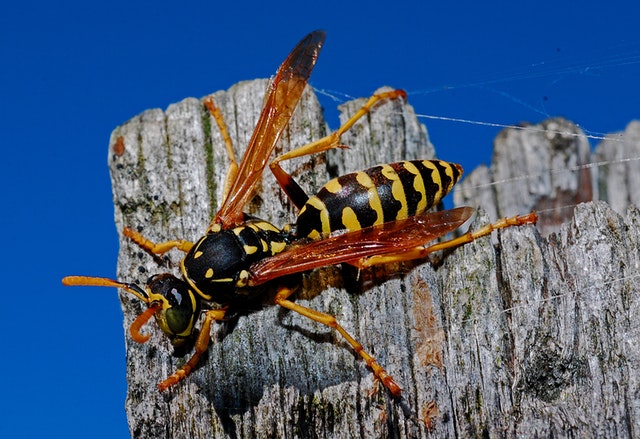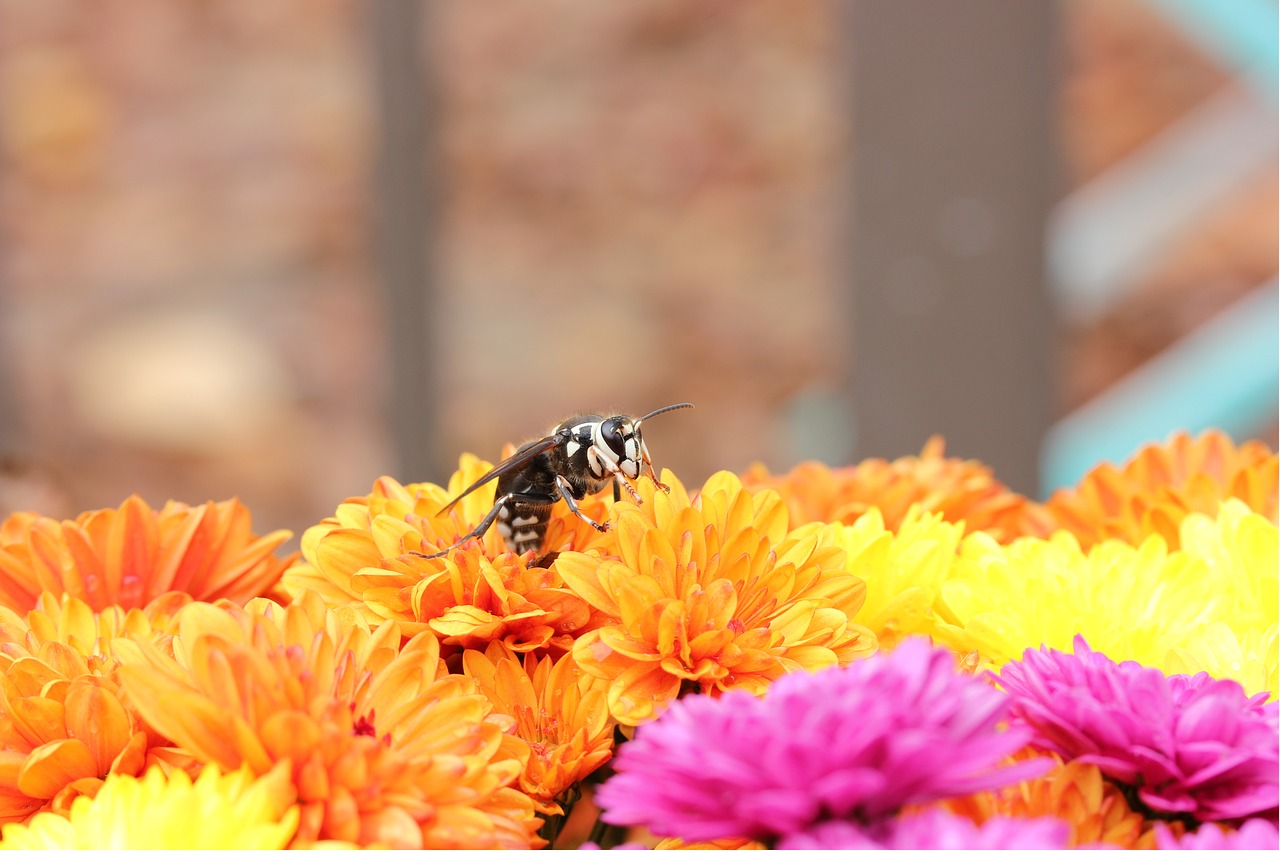When it comes to identifying pests, there can be some complications with getting the correct name to the face of the pest. This is especially difficult when it comes to Bald-Faced Hornets and Yellow Jackets. They look so similar and at times are difficult to tell the difference between them. To make sure you understand the difference between these two pests we are going to explain their appearance, behavior, diet, and even their habits. This way you can have a good understanding of which pest you are having issues with.
Bald-Faced Hornet belong to the genus Dolichovespula. Bald-faced hornets are more closely related to yellow jackets than they are hornets. The body of the bald-faced hornet is black in color, and its face is marked with white. Bald-faced hornets are larger than most yellow jackets, with workers ranging from 15 to 20 mm or more. They are more active during the day and usually build nests made of paper in trees or under overhangs. Adults consume liquids, usually consisting of sugars like juices or nectar. However, they will bring back solids such as insects or carrion for the larvae to consume.
Yellow jackets, genera Dolichovespula and Vespula, get their name from their yellow and black bodies. They measure from 10 to 16 mm in length. Most yellow jackets are black and yellow. Although some may exhibit white and black coloration. In contrast to a bee, the yellow jackets waist is thinner and defined. Their elongated wings are as long as the body and fold latterly when at rest. Yellow jackets and wasps that can be identified by their alternating black and yellow body segments and small size. They are often mistake for bees, although their bodies lack the same amount of hair, rounded abdomen, and the expanded hind legs used for carrying pollen of the bee. These wasps are very social and live in colonies that may contain thousands of insects at a time.
At times we get asked what is the importance of a yellow jacket? Well the answer is they are pollinators and they eat beetle grubs, flies, and other harmful pests. However, they are also known scavengers who eat meat, fish and sugary substances, making them a nuisance near trash receptacles and picnics. Many yellow jackets are ground-nesters. Their colonies can be found under porches or steps, in sidewalk cracks, around railroad ties or at the base of trees. At times the queen uses a wall void of a building as a nesting place. Some yellow jackets build aerial nests in bushes or low-hanging branches or in the corners of buildings and other man-made structures.
Signs of infestations from both pests are seeing their nests and the workers. The nests of a Bald-Faced Hornet are made of paper. For Yellow Jackets their aerial nests will be a sign of infestation. When it comes to getting rid of pests call the experts at All Star Pest Control. We can give you tips on how to eliminate the pests, or if the job is too big our trained professionals can come and solve the problem for you. Do not let this infestation go for a long period of time. These insects can cause damage to property, animals, and even family members. They may be small but when a swarm comes towards someone they can cause some serious damage. There is never a job too big or too small for us so give us a call today and All Star Pest Control will be there to help.


